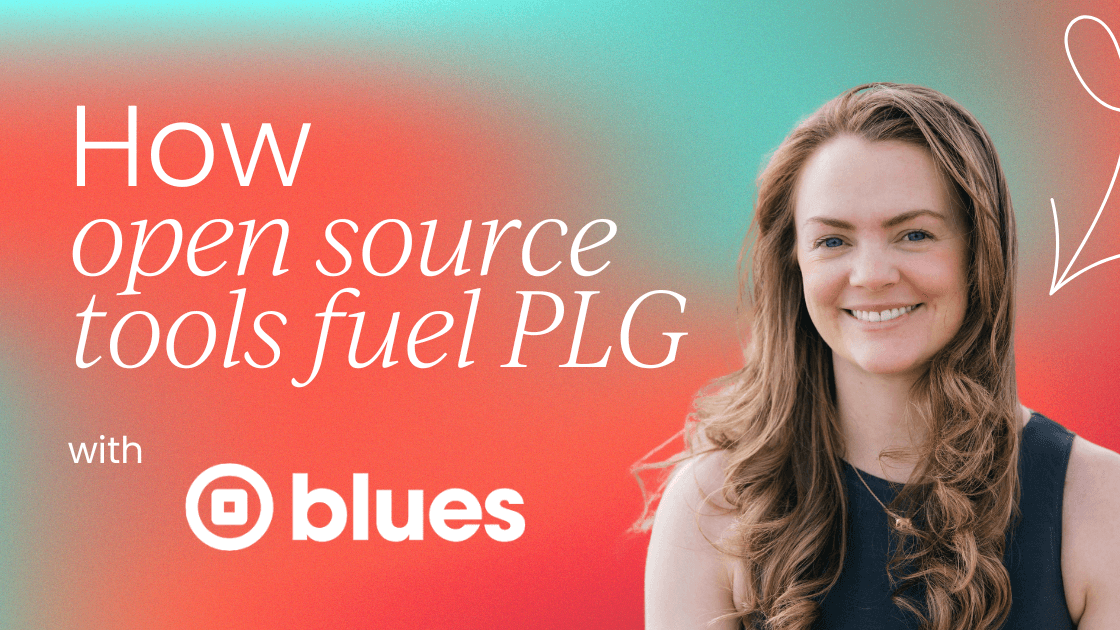Marketing to developers is tough. Unlike typical B2B buyers, developers want hands-on experience with tools before making decisions. This is why so many SaaS companies offer freemium access, letting developers “try before they buy” is effective for conversion.
But there’s a catch: Freemium only works when developers already know your product exists. So, how do you generate interest from developers who aren’t yet aware of your solution?
This is where open-source tools become a game-changer for lead generation. By creating genuinely useful open-source tools that complement your product, you connect with developers on their terms while creating a natural pathway to your commercial offerings.
In this post, I’ll walk through two real-world examples from my time working at Canonical and Balena that demonstrate how this approach works in practice.
This article is designed for marketing professionals at developer-focused companies who want to build more effective developer acquisition strategies.
When executed thoughtfully, this approach creates the perfect win-win: developers gain access to valuable resources they can trust, and you build relationships with highly qualified leads who already understand what you’re about.
The open-source lead generation strategy
Why developers trust open-source (and why that matters)
Open-source software embodies core values that developers deeply respect: transparency, community contribution, and freedom from vendor lock-in.
When your company contributes meaningful open-source tools, you’re doing more than simply offering free resources, you’re making a powerful statement about your organization’s values.
Your public code demonstrates technical skill, ongoing maintenance shows commitment, and your open approach signals that you understand developer values. This foundation of trust can’t be manufactured through advertising or marketing campaigns, it must be earned through meaningful contribution.
Two ways to turn open source into leads
As a marketer, you might be wondering how open-source tools translate to measurable leads and business impact. There are two effective strategies for generating leads through open source:
- The “Sign-Up to Access” approach – With this method, users need to create an account to download or fully utilize your tool. These tools typically require server-side components to function. While the source code remains accessible (allowing developers to theoretically host it themselves), the convenience of your hosted version makes registration the path of least resistance for most users.
- The “Build Relationship First” approach – This strategy focuses on integrating your tool into developers’ daily workflows without immediate registration requirements. While lead generation is less direct, it often yields higher-volume leads with next to no barrier to entry.
From developer adoption to product-led growth
When developers adopt your open source tools, they create a natural entry point to your broader product ecosystem. This developer-first approach naturally evolves into product-led growth because:
- Developers become internal champions, advocating for and introducing your solutions throughout their organizations.
- The technical credibility you’ve established transfers to your entire brand portfolio, including commercial offerings.
- Your product marketing team can focus on expanding value to self-qualifying leads rather than convincing skeptical prospects.
- Word-of-mouth referrals multiply organically as developers share valuable tools within their professional networks.
This creates a self-reinforcing engine for sustainable product-led growth that strengthens over time, continuously bringing in pre-qualified leads who already know and trust your technology.
Case studies: Open source lead generation in action
Let’s examine how two different companies implemented these strategies with their open source tools, demonstrating both approaches to developer lead generation.
Case study one: balenaEtcher – The “Build Relationship First” approach
What is balenaEtcher?
BalenaEtcher simplifies flashing images to SD cards and USB drives. Before Etcher, this process was error-prone and often required technical command-line knowledge.
With its simple interface, Etcher transformed a frustrating task into a simple three-step process: select image, select drive, and flash.
What makes Etcher brilliant as a lead generation tool is that it solves a genuine pain point adjacent to balena’s core IoT device management platform.
Every developer building an IoT device needs to flash SD cards, meaning Etcher users are often working on exactly the types of projects that could benefit from balena’s commercial offerings.
Distribution and promotion
Balena’s distribution strategy for Etcher was simple and effective:
- They created a dedicated website optimized for SEO with a comprehensive FAQ section and a straightforward download process
- They developed targeted tutorials for IoT developers that naturally incorporated Etcher into a broader workflow
However, their growth accelerated when the developer community embraced and amplified Etcher organically:
- Technical influencers and bloggers began featuring it as an essential tool in their tutorials
- Maintainers of other open-source projects linked to Etcher as the recommended flashing solution
- Strong GitHub engagement increased the tool’s visibility and credibility within developer circles
Balena focused on making the tool discoverable when developers were actively searching for solutions rather than pushing intrusive advertising. The community’s promotion supported this growth by creating a series of authoritative backlinks to the webpage.
Lead generation mechanism
Etcher represents the “Build Relationship First” approach to lead generation. The tool itself is completely free and open source with no registration required. Instead, it creates brand exposure through:
- Subtle branding: The balena logo and name appear throughout the application interface.
- Contextual links: The application includes unobtrusive links to balena’s other products and services at moments when they might be relevant to the user’s workflow.
- ‘While you wait’ promotion: During the flashing process, the UI displays subtle messaging about balena’s platform, achieving significant click-through rates
This approach succeeds by addressing a specific pain point related to but distinct from balena’s core offering.
They understood that not every Etcher user needs enterprise IoT management, but for those building commercial IoT products, balena positioned itself as the natural next step.
By establishing genuine utility in developers’ workflows first, balena ensured they would be top-of-mind when those same developers eventually needed their enterprise offering.
Case study two: Ubuntu frame – The “Sign-Up to Access” approach
What is Ubuntu frame?
Ubuntu frame is Canonical’s specialized display server designed specifically for embedded displays and digital signage.
This open-source solution tackles the complex challenges of creating responsive graphical interfaces on edge devices such as food-ordering kiosks, industrial control panels, and automotive displays.
By offering this specialized software, Canonical positioned itself as a developer tool provider within a niche industry that it identified as a major market opportunity for its core operating system products.
Distribution and promotion
Canonical distributed Ubuntu frame through carefully targeted channels that leveraged their established credibility in the Linux community while focusing on developers building digital display solutions through:
- A specialized landing site separate from Ubuntu’s main website – this dedicated space allowed them to optimize for organic search traffic in their target niche of embedded displays and digital signage.
- A well-maintained GitHub repository featuring comprehensive documentation alongside an active community forum where users are encouraged to ask questions, share solutions, and connect with peers.
- Educational webinars centered on practical applications – these sessions captured top-of-funnel audiences just beginning to explore embedded UI solutions.
- Rich technical content, including detailed developer guides and compelling customer case studies, is predominantly promoted through professional channels like LinkedIn.

Lead generation mechanism
Ubuntu frame employs the “download to access” approach to lead generation. While the core code is open source, developers need to:
- Register for a Ubuntu One account to access comprehensive documentation
- Create an Ubuntu SSO account to use certain integration features
- Register devices to receive updates and security fixes
This approach creates a pathway to identify serious users by requiring registration when developers are moving from experimentation to implementation and are likely evaluating commercial support options.
Canonical’s approach demonstrated how targeted content marketing can transform a technical open-source tool into a lead generation engine.
By creating valuable resources, they established Ubuntu frame as the natural starting point for digital display projects while building relationships that would later convert to commercial opportunities.
Beyond lead generation
While lead generation is a primary goal, open source tools deliver additional benefits that enhance marketing effectiveness:
- Community building: Active open source projects attract communities that provide feedback, contribute improvements, and advocate for your broader ecosystem.
- Market education: Tools can familiarize developers with concepts and approaches related to your core commercial offering.
- Technical SEO: Documentation, GitHub repositories, and related content can significantly improve search visibility.
- Competitive differentiation: In crowded markets, meaningful open source contributions can set your company apart.
These advantages compound over time, creating a sustainable pipeline of qualified leads who already understand and value your approach.
By solving real pain points with high-quality open source tools, companies can organically build trusting relationships with developers who become champions for their products.
For companies seeking to unlock developer mindshare, open-source represents not just a tactic but a fundamental philosophy that aligns business objectives with developer values, creating the foundation for sustainable, long-term product-led growth.








